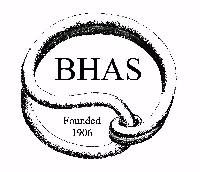Founded 1906
Archaeology Report Spring 2010
|
Selected Articles from the BHAS Bi-Annual magazine "Flint" Spring 2010
Field Walking at Ovingdean A good number of BHAS field unit members turned out in early February for field walking at Ovingdean. The field walked is the long thin field that runs down from the village of Ovingdean almost to St Dunstans, running parallel and west of the road called Greenways. The field produced numerous amounts of oyster shell and fire cracked flint. As expected the field also produced prehistoric flint work, and Roman and medieval pottery. The finds will now be cleaned and catalogued and concentrations sought through the creation of dot density diagrams. The field walking was an extremely useful addition to the previous investigations conducted over the past several seasons and a broader picture giving a panoramic perspective will be produced by linking all of the results together.
Rocky Clump The excavation at Rocky Clump continued until the early part of December. Despite the inclement weather a hardy team continued removing more fill from the 'bones' trench where a flint cobbled floor had been found earlier in the season. The excavations are extending the trench on the north and east sides to seek out the extent of the floor. The addition of working in the middle of the week has allowed for greater progress for the excavation and it is possible that the north side of the floor surface is now appearing. During the later summer months and over the winter it has been noted that the west end of the cobbled floor has sunk a few centimetres into a circular configuration. Is this the location of a possible weIl? The east trench fondly called 'old gits corner' continues to surprise by producing more oyster shell and pottery than any other section at present. lt was in this location that Clive Skeggs conducted some investigations during the 1960's, but lt is of interest that if this is the location of the possible spoil heap why so much pottery was missed. The BHAS Field Unit will return to Rocky Clump in March 2010.
|
